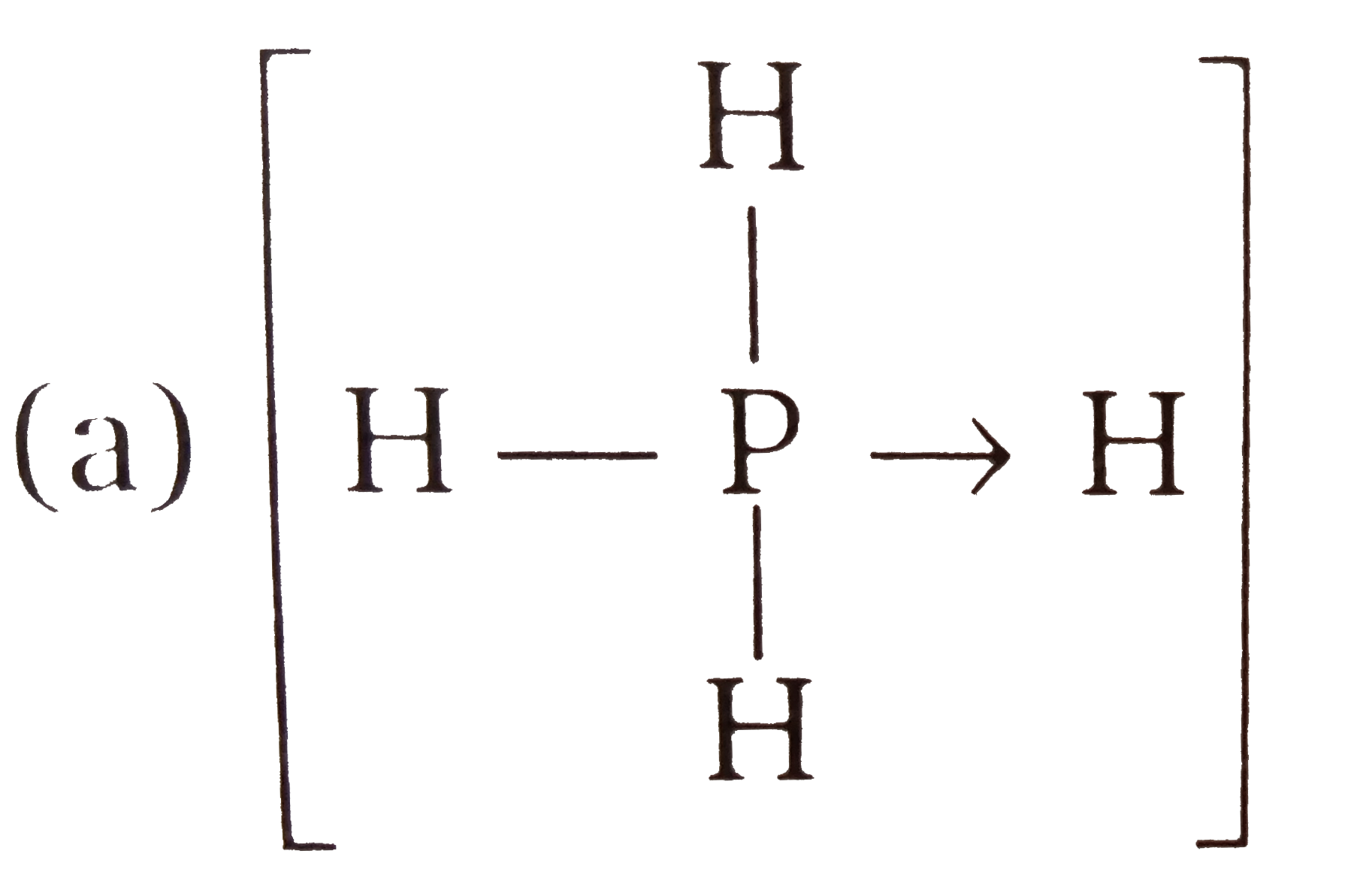Which formula does not correctly represent the bonding capacity of the central atom involved?
⎡⎢ ⎢⎣H−H∣P∣H→H⎤⎥ ⎥⎦+



The correct Answer is:D
To determine which formula does not correctly represent the bonding capacity of the central atom involved, we need to analyze the bonding capacity of the central atom in each given option. The bonding capacity is defined as the total number of bonds an atom can form, which is generally determined by the number of valence electrons available for bonding.
1. Understanding Bonding Capacity:
- The bonding capacity of an atom is determined by its valence electrons. For example, if an atom has 5 valence electrons, it can form a maximum of 5 bonds (considering the sharing of electrons).
2. Analyzing Option 1: PH+4:
- Phosphorus (P) has 5 valence electrons.
- In PH+4, phosphorus forms 4 bonds with hydrogen atoms.
- This matches its bonding capacity (5 valence electrons), so this structure is correct.
3. Analyzing Option 2: OF2:
- Oxygen (O) has 6 valence electrons.
- In OF2, oxygen forms 2 bonds with fluorine atoms and has 2 lone pairs remaining.
- This also matches its bonding capacity, so this structure is correct.
4. Analyzing Option 3: N≡O and OH:
- Nitrogen (N) has 5 valence electrons.
- In the given structure, nitrogen forms 3 bonds (one with oxygen in a double bond and one with hydroxyl) and has a lone pair.
- This matches its bonding capacity, so this structure is correct.
5. Analyzing Option 4: C≡C:
- Carbon (C) has 4 valence electrons.
- In the structure C≡C, each carbon is forming 4 bonds (2 with each other and 2 with other atoms).
- This indicates that carbon is involved in bonding with more electrons than it has available (5 bonds), which exceeds its bonding capacity.
- Therefore, this structure does not correctly represent the bonding capacity of carbon.
Conclusion:
The formula that does not correctly represent the bonding capacity of the central atom is Option 4.
- The bonding capacity of an atom is determined by its valence electrons. For example, if an atom has 5 valence electrons, it can form a maximum of 5 bonds (considering the sharing of electrons).
- Phosphorus (P) has 5 valence electrons.
- In PH+4, phosphorus forms 4 bonds with hydrogen atoms.
- This matches its bonding capacity (5 valence electrons), so this structure is correct.
- Oxygen (O) has 6 valence electrons.
- In OF2, oxygen forms 2 bonds with fluorine atoms and has 2 lone pairs remaining.
- This also matches its bonding capacity, so this structure is correct.
- Nitrogen (N) has 5 valence electrons.
- In the given structure, nitrogen forms 3 bonds (one with oxygen in a double bond and one with hydroxyl) and has a lone pair.
- This matches its bonding capacity, so this structure is correct.
- Carbon (C) has 4 valence electrons.
- In the structure C≡C, each carbon is forming 4 bonds (2 with each other and 2 with other atoms).
- This indicates that carbon is involved in bonding with more electrons than it has available (5 bonds), which exceeds its bonding capacity.
- Therefore, this structure does not correctly represent the bonding capacity of carbon.
The formula that does not correctly represent the bonding capacity of the central atom is Option 4.
Topper's Solved these Questions
Similar Questions
Knowledge Check
Which fomulae does not correctluy represents the bonding capacity of the atom involued ?
A B
B C
C D
D
Which one of the following formulae does not correctly represent the bonding capacities of the two atoms involved?
A⎡⎢ ⎢⎣H−H∣P∣H−H⎤⎥ ⎥⎦B C
C D
D
Which one of the following formulae does not correctly represent the bonding capacities of the atoms involved ?
A B
B C
C D
D
Which of the following equations does not correctly represent the first law of thermodynamcis?
View SolutionThe bond angle around the central atom is highest in
View SolutionWhich of the following correctly represents the order of atomic radii
View SolutionWhich one of the following equations does not correctly represent the first law of thermodynamics for the given processes involving an ideal gas?
(Assume non-expansion work is zero)
View SolutionWhich of the following correctly represent the electronic distribution in the Mg atom?
View Solution
